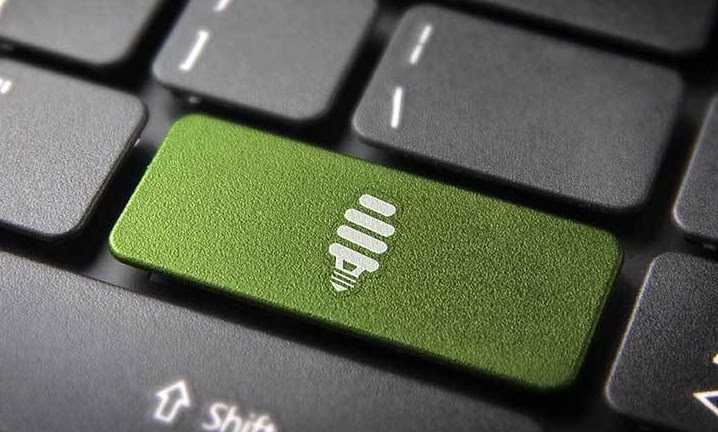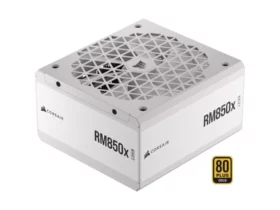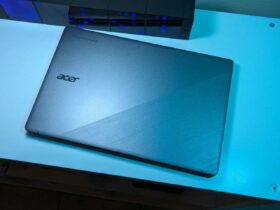Apple and Windows are the two most used operating systems in the world, but how do you know if a Mac or a Windows PC is better? We analyze the pros and cons of the Apple and Windows ecosystem, which computer consumes the most and the tricks to save energy with your computer
The computer has now become an indispensable tool in everyday life and the main players in the market are the operating systems of Microsoft and Apple which alone cover almost the entire world market. The fight Apple vs Microsoft it’s a battle that has lasted for decades and one of the first questions that computer buyers ask themselves is: better a PC or a Mac?
Mac vs Windows: Ecosystems Compared
It is not easy to answer this question, as both companies have numerous advantages in the design and construction of their computers. Comparing a Windows PC and a Mac, on the quality-price level, we could assign the victory to Windows, as it offers the customer high-performance devices, inserted in a much more accessible price range than the Cupertino brand. Bad differences between Microsoft and Apple are different and each has its pros and cons: let’s analyze in detail the advantages and differences between Mac and PC.
Apple and Windows, pros and cons
Microsoft Windows 10 and Apple macOS are two completely different operating systems from each other. The apple brand has always stood out for the aesthetics of its devices, and for the user experience, simple and intuitive: the Mac operating system it is really usable especially when combined with Apple components or developed specifically for Mac. However, it is a closed ecosystem, difficult to apply to PCs that do not belong to the same company.
On the other hand, the Windows system, which holds 90% of the world market, is adaptable on an infinite number of computers, from laptops to tablets, while MacOs is, on the other hand, only available for notebooks, desktops and all-computers. in-one Apple.
The Windows operating system, requires greater technical expertise for configuration, to install Windows compatible applications and peripherals. The fact that a Windows system presents greater possibilities for modifications and configurations, makes it on the one hand more complex to manage, compared to a Mac, but on the other hand it represents an advantage for those who require more power from their computer, and need to be able to update whenever it feels the need.
Conversely, you cannot upgrade your Mac device, but you have to buy the next model. In general, if you have an iphone, or other Apple devices, and do not feel the need to excessively customize your PC, it is advisable to buy a Mac as the integration between the different apple devices is really simple. If, on the other hand, there is the need to modify a PC according to your needs, creating an ad hoc user experience, it is preferable to choose a Windows system.
How much does my computer consume?
Computers also consume energy and help increase electricity bills. Often it is not taken into account that a normal computer that remains on 8 hours a day can get to consume up to 175 kWh in one year, and if you add the C02 emissions emitted into the atmosphere, especially when browsing online, it is clear how to save energy with your PC represents a very important advantage both from an environmental and an economic point of view.
By making a quick calculation based on an average of 8 hours a day for 5 days a week, i annual consumption of a Mac they are around 338 kWh for the 24 “IMac and 166 kWh for the 13” MacBook. To understand how much your Mac weighs on your bills, simply multiply the number by the electricity tariff subscribed with your own supplier, but in general you get an annual cost of around 40 euros for the IMac and around 20 euros for the MacBook.
Searching among the supplier contacts, we can always go and change our electricity and gas tariff and find one that is more suited to our consumption needs. If, on the other hand, we have not yet subscribed to a rate, it is advisable to make a comparison between the offers of best suppliers on the market, so as to save on households.
Regarding the you consume Windows, these depend a lot on the PC you use, but thanks to the upgrades passed from Windows 8 to 10, Microsoft has introduced several changes in the user experience of its customers, offering the possibility to activate the power saving mode. For activate the Energy Saving function on Windows simply access the Control Panel of your computer from the Start button at the bottom left. Among the various icons we will have to select Energy Saving Options and click on Energy Saving to optimize the performance of our PC and consequently decrease the amount of energy used. On Windows 10 save energy it is even more intuitive: just click on the battery icon at the bottom right and set your preferred values for the two options available, i.e. maximum battery life and maximum performance.
PC and energy saving, because it matters
As mentioned, our PCs also consume energy, and, especially if we use them every day, it is important to try to save energy, both to protect the environment and reduce electricity bills. Fortunately there are several tricks that save energy with your PC and to reduce consumption. Let’s see which ones:
- Lower the brightness: reducing the brightness of the PC saves energy and extends battery life;
- Choose a fiber offer: FTTH fiber technology allows you to maximize connection speed, reducing waiting times and energy consumption. To find out if we can activate a fiber offer, simply check the fiber coverage of your home.
- Always turn off your PC when not needed: electronic devices consume energy even when they are in stand-by, so if we do not use our computer it is advisable to turn it off and possibly unplug it from the power strip, because even a PC off but with the socket inserted consumes useless energy.
- Activate the spin down: some operating systems provide users with the spin down function, or the possibility of slowing down the PC hard disk in case of prolonged inactivity. By activating the spin down function we can save up to 90% of the energy consumed by our hard disk;
- Disable wi-fi and internet connection: if we are not browsing online it is important to deactivate the wireless connection to avoid increasing consumption.
- Prefer a laptop: A laptop consumes less power than a desktop PC.















